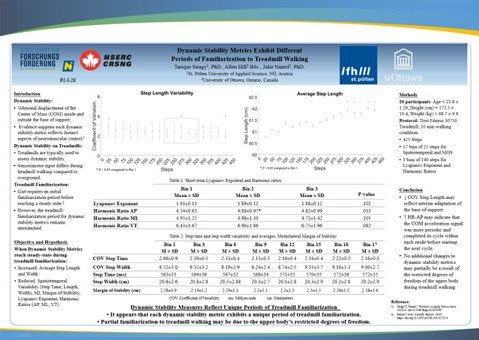Time necessary for gait to adapt to treadmills
Dynamic Stability Metrics Exhibit Different Periods of Familiarization to Treadmill Walking
In July 2023, Tarique Siragy within the CDHSI presented his latest research at the International Society of Posture and Gait Research in Brisbane, Australia.
His research examined the time necessary for common biomechanical metrics, which are used to quantify walking stability, to adapt to treadmill walking.
This research is particularly important as falls are the second leading cause of death and accidental injury worldwide after automobile accidents with the majority of falls occurring while walking.
Typically, to assess stability, clinicians and researchers use treadmill-based gait protocols due to their convenience for data collection. However, walking on a treadmill differs from overground walking and previous research demonstrates that individuals require an initial familiarization period, to adjust to the different sensorimotor input from the treadmill belts before reaching a stable steady-state. As each stability quantifies a distinct aspect of neuromuscular control, the altered sensorimotor input from the treadmill would necessitate an adequate familiarization period to avoid confounding the analyses and interpretation for fall risk. Thus, this research presented how these stability metrics change overtime during a period of 10-minute walking on a treadmill.
This investigation was led by Tarique Siragy within the CDHSI in collaboration with Allen Hill and Dr. Julie Nantel (Associate Professor) at the University of Ottawa. This research was funded by the Gesellschaft für Forschung Förderung as well as the Natural Sciences and Engineering Research Council of Canada.
